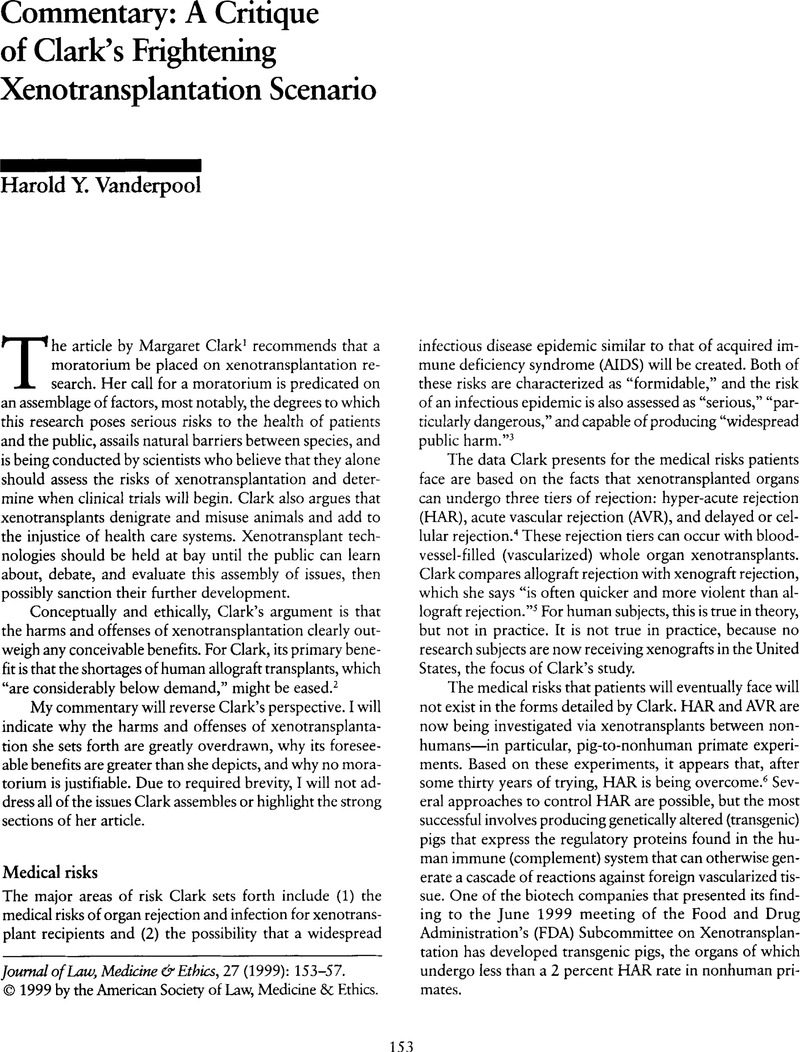Crossref Citations
This article has been cited by the following publications. This list is generated based on data provided by Crossref.
Cooper, D.K.C.
Keogh, A.M.
Brink, J.
Corris, P.A.
Klepetko, W.
Pierson, R.N.
Schmoeckel, M.
Shirakura, R.
and
Warner Stevenson, L.
2000.
Report of the xenotransplantation advisory committee of the international society for heart and lung transplantation:.
The Journal of Heart and Lung Transplantation,
Vol. 19,
Issue. 12,
p.
1125.
Demme, Richard A.
2001.
The Ethics of Organ Transplantation.
Vol. 7,
Issue. ,
p.
195.
Denner, Joachim
and
Tönjes, Ralf R.
2012.
Infection Barriers to Successful Xenotransplantation Focusing on Porcine Endogenous Retroviruses.
Clinical Microbiology Reviews,
Vol. 25,
Issue. 2,
p.
318.
O'Rourke, Laurie G.
2014.
Emerging Diseases of Animals.
p.
59.
Lakey, Jonathan R. T.
Lamb, Morgan
Alexander, Michael
Chapman, David
Imagawa, David
and
Krishnan, Rahul
2014.
Islets of Langerhans, 2. ed..
p.
1.
Krishnan, Rahul
Lamb, Morgan
Alexander, Michael
Chapman, David
Imagawa, David
and
Lakey, Jonathan R. T.
2015.
Islets of Langerhans.
p.
1275.
Padilla, Luz A.
Hurst, Daniel
Maxwell, Kathryn
Gawlowicz, Kennan
Paris, Wayne
Cleveland, David
and
Cooper, David K.C.
2022.
Informed Consent for Potential Recipients of Pig Kidney Xenotransplantation in the United States.
Transplantation,
Vol. 106,
Issue. 9,
p.
1754.



